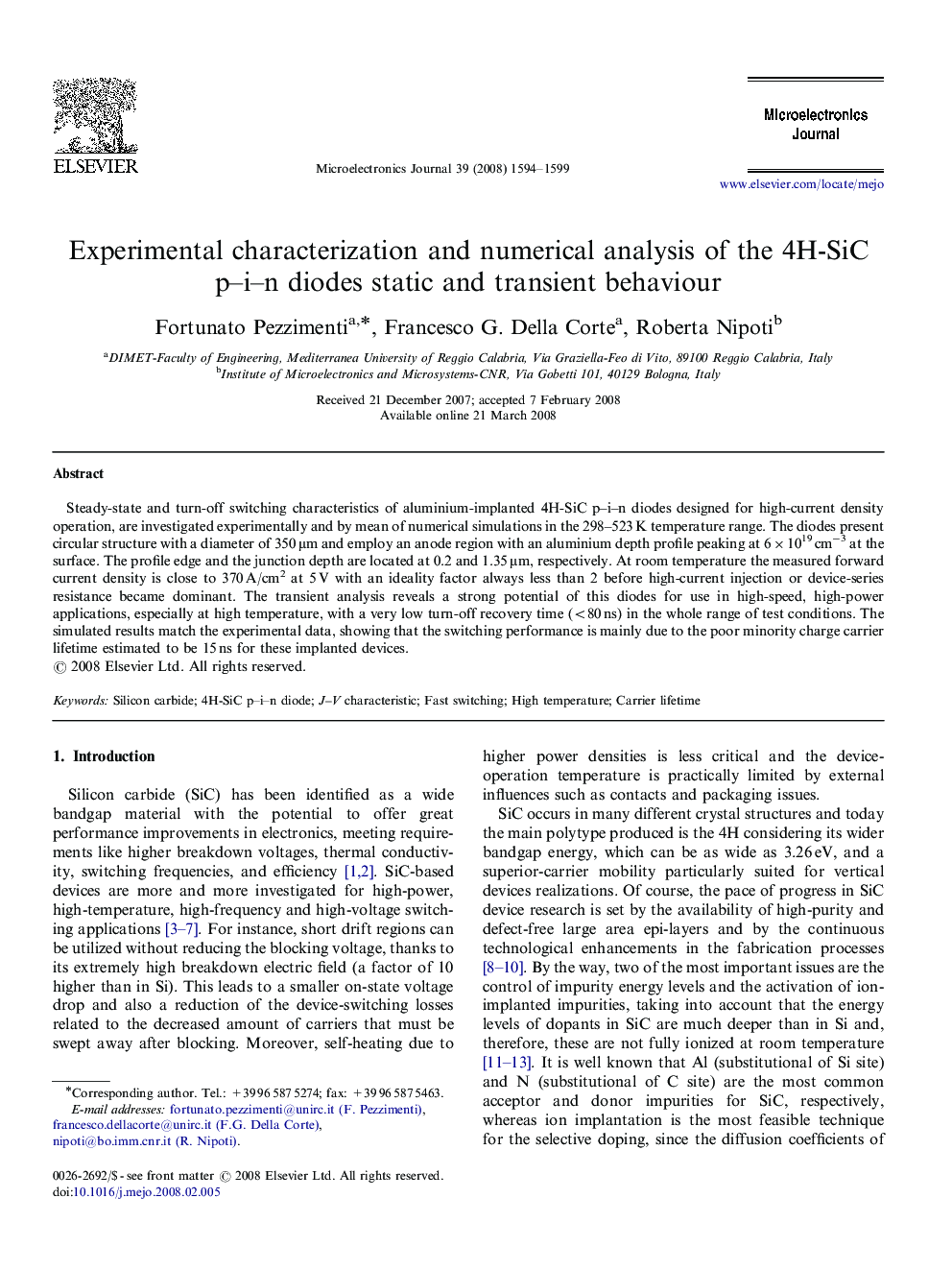| Article ID | Journal | Published Year | Pages | File Type |
|---|---|---|---|---|
| 547919 | Microelectronics Journal | 2008 | 6 Pages |
Steady-state and turn-off switching characteristics of aluminium-implanted 4H-SiC p–i–n diodes designed for high-current density operation, are investigated experimentally and by mean of numerical simulations in the 298–523 K temperature range. The diodes present circular structure with a diameter of 350 μm and employ an anode region with an aluminium depth profile peaking at 6×1019 cm−3 at the surface. The profile edge and the junction depth are located at 0.2 and 1.35 μm, respectively. At room temperature the measured forward current density is close to 370 A/cm2 at 5 V with an ideality factor always less than 2 before high-current injection or device-series resistance became dominant. The transient analysis reveals a strong potential of this diodes for use in high-speed, high-power applications, especially at high temperature, with a very low turn-off recovery time (<80 ns) in the whole range of test conditions. The simulated results match the experimental data, showing that the switching performance is mainly due to the poor minority charge carrier lifetime estimated to be 15 ns for these implanted devices.
